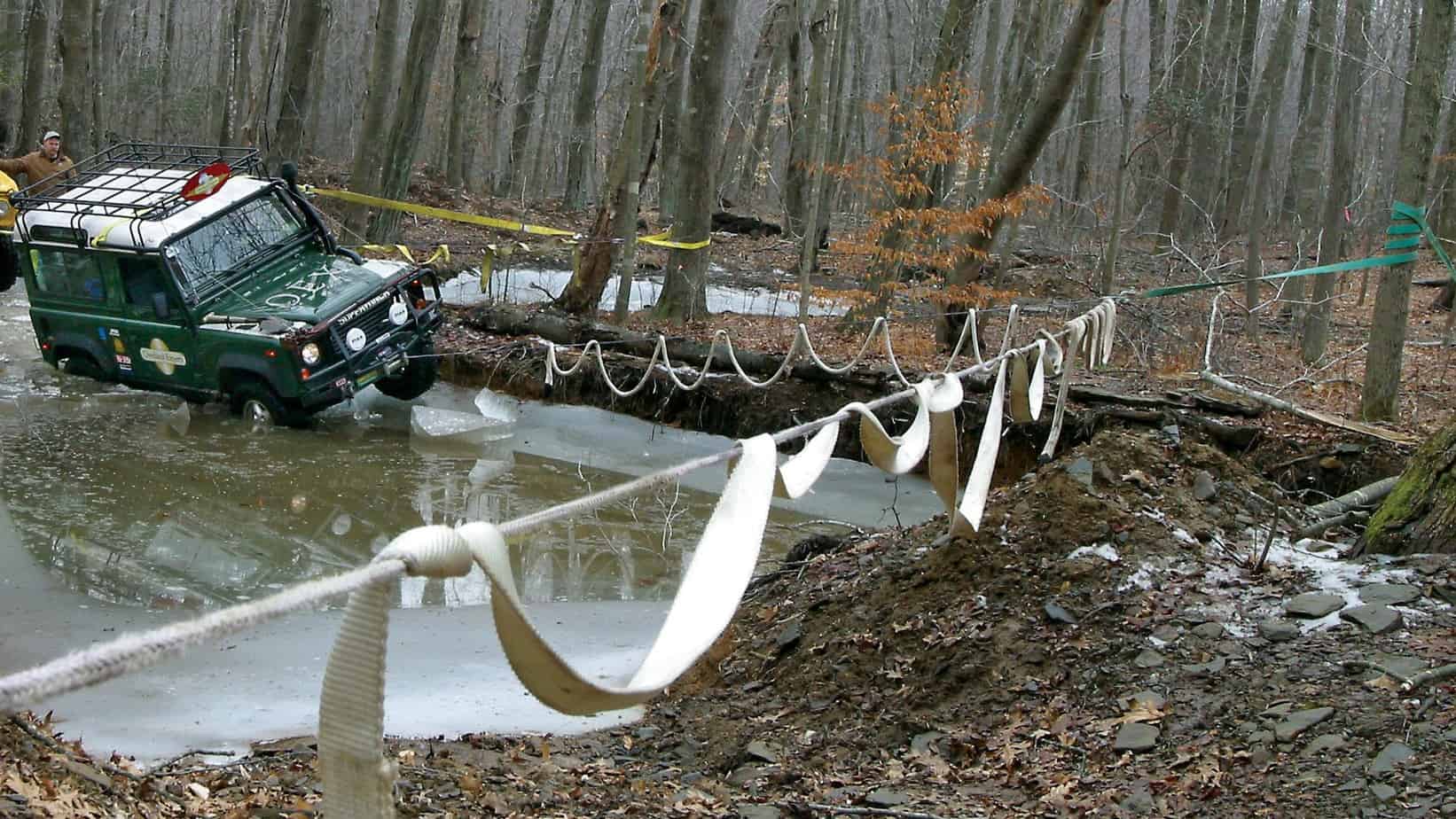The other day I ran into the proud owner of a well-built four-wheel drive. Eager to talk shop, he began to list a few of the numerous pieces of equipment he had installed on his new vehicle. The list included 37-inch tires, aftermarket wheels, a 4-inch lift, lights, a roof rack, a front bumper, and of course a winch were all bolted on and “ready for adventure,” or so he thought. It was at this point that I asked what kit he had chosen to go with his winch, and with a slightly bewildered look he replied, what do you mean? Unfortunately, I wasn’t the least bit surprised. Whether it’s due to a lack of information spread throughout the industry, or simply low interest in proper training, more and more people are heading out into the back country without a firm grasp of what equipment they need, or how to operate the equipment they have.
 With that in mind, we developed the following article as a starting point for those assembling a basic winch kit. Please keep in mind that this is not a definitive guide, and that every vehicle and situation is different, so be sure to consider what will work best for your application before making a purchase. Once you’ve perused this article and learned about winching equipment, we encourage you to read “Winching Without The Worry,” by Bruce Elfstrom, which we’ve provided a link to at the bottom of this page. While this article simply covers what to use, his dives into how to use this equipment in a safe and effective manner. We hope you find both of these pieces helpful, and as always, happy trails!
With that in mind, we developed the following article as a starting point for those assembling a basic winch kit. Please keep in mind that this is not a definitive guide, and that every vehicle and situation is different, so be sure to consider what will work best for your application before making a purchase. Once you’ve perused this article and learned about winching equipment, we encourage you to read “Winching Without The Worry,” by Bruce Elfstrom, which we’ve provided a link to at the bottom of this page. While this article simply covers what to use, his dives into how to use this equipment in a safe and effective manner. We hope you find both of these pieces helpful, and as always, happy trails!
The Basic Kit
If you’re looking at winching gear, there’s a lot to take in. Straps and shackles comes in all shapes and sizes, and there’s a load of specialized accessories claiming to be that one item you will need in a stuck situation. To help separate marketing gimmicks from facts, lets start with the minimum equipment you should carry with a winch.
The Winch
Duh, right? But I’ve included this because simply having a winch isn’t enough. You need to think about choosing the right winch, which involves more consideration than most people realize. Here are a few things to think about.
- Capacity – The most important factor is load capacity. The general rule of thumb is that your winch should be rated for a minimum of 1.5 times your vehicle’s TOTAL weight. This is to provide a margin of safety, and to accommodate the extra force required to pull a stuck vehicle out of say, a huge mud pit. Now chances are your vehicle is not stock, and on a trip it won’t be empty, so you’ll need to determine the total weight by adding the factory GVW (gross vehicle weight) plus the weight of any accessories, cargo, passengers, and other things contained within the vehicle on normal trips. Oh, and don’t forget to add the weight of the winch! If you don’t feel like calculating this out, or simply want an exact figure, hit a truck stop on your next trip and drive onto the scales. The cashier will give you a slip with everything you’ll need to know, including the distribution of weight on the front and rear axles. Once you’ve got your weight, multiply it by 1.5 to find your minimum winch capacity. For this example, lets say your gross loaded weight is 8,000 pounds (8,000 x 1.5 = 12,000 pounds), so you’ll need at least a 12,000-pound winch. Keep in mind that winches are only rated for that pulling capacity on the first wrap of the drum, and many factors can affect real-world performance, but for simplicity’s sake we won’t go into them here. You can read more about that stuff in the “Winching Without the Worry” article linked at the bottom of the page.


- Price and Reliability – Price always plays a part in gear selection, so you need to ask yourself how reliable does your winch really need to be? If you travel solo to remote places, you might want to spend the cash for a Warn, Superwinch, Come-Up or the like. If you only travel in groups or on nearby trails, selecting a high-end winch might not be as imperative. Nobody wants to deal with a broken winch on the trail, but if the decision comes down to a cheap winch versus no winch at all, you may take the risk. Just be sure to never compromise on winch capacity in order to save on cost. Instead, consider a Hi-Lift as an alternative. They can be used as a winch in sticky situations, and are great tools to have in your arsenal. Traction ladders are another (and safer) alternative, but they can’t be used in all situations.
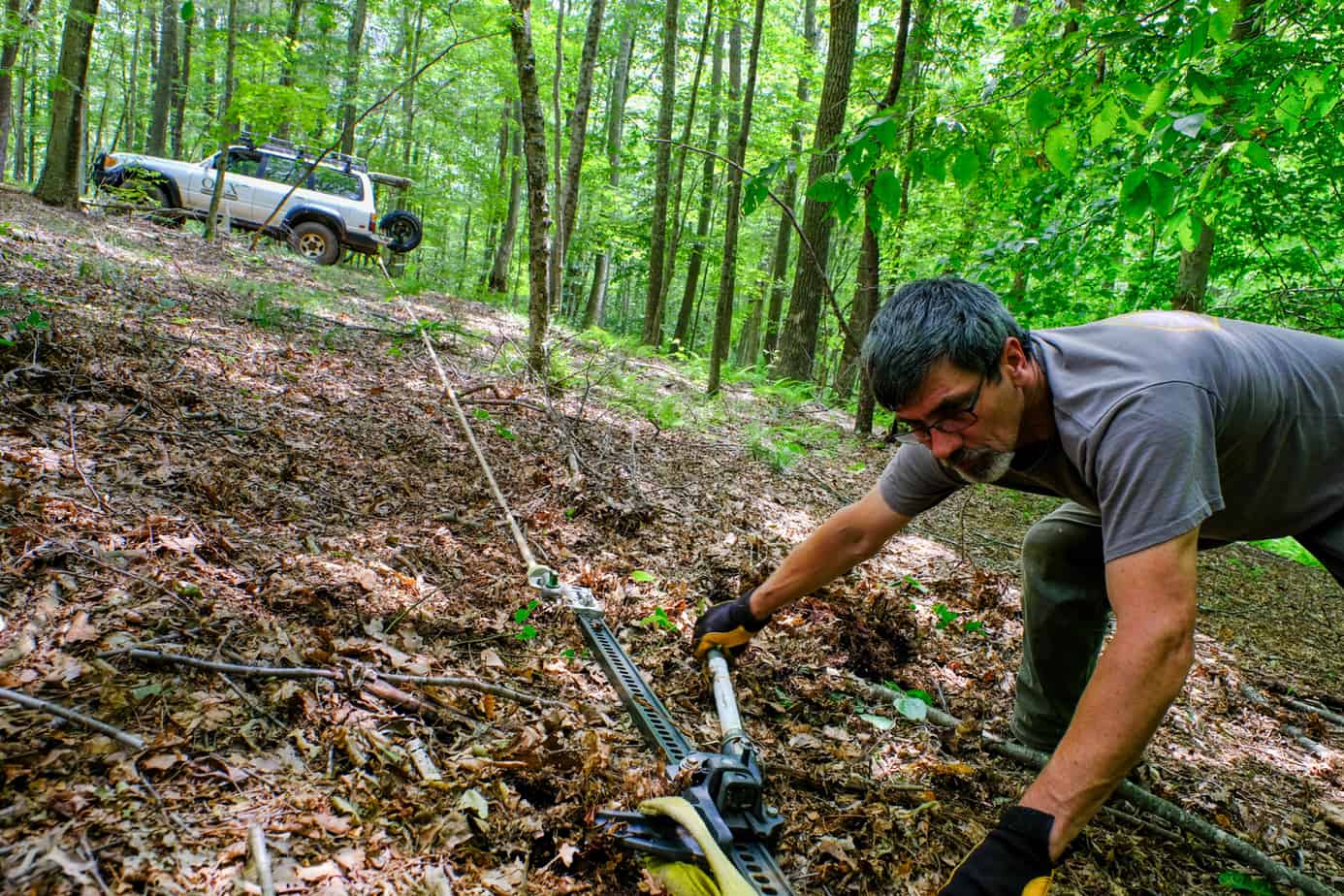
- Approved Line – There are two basic types of winch line: steel and synthetic. Synthetic weighs less, is safer, and is easier to handle, but not all winches are approved for it. Some winches may melt synthetic line or crush the drum when under load, so consider what type of line you want before buying a winch.
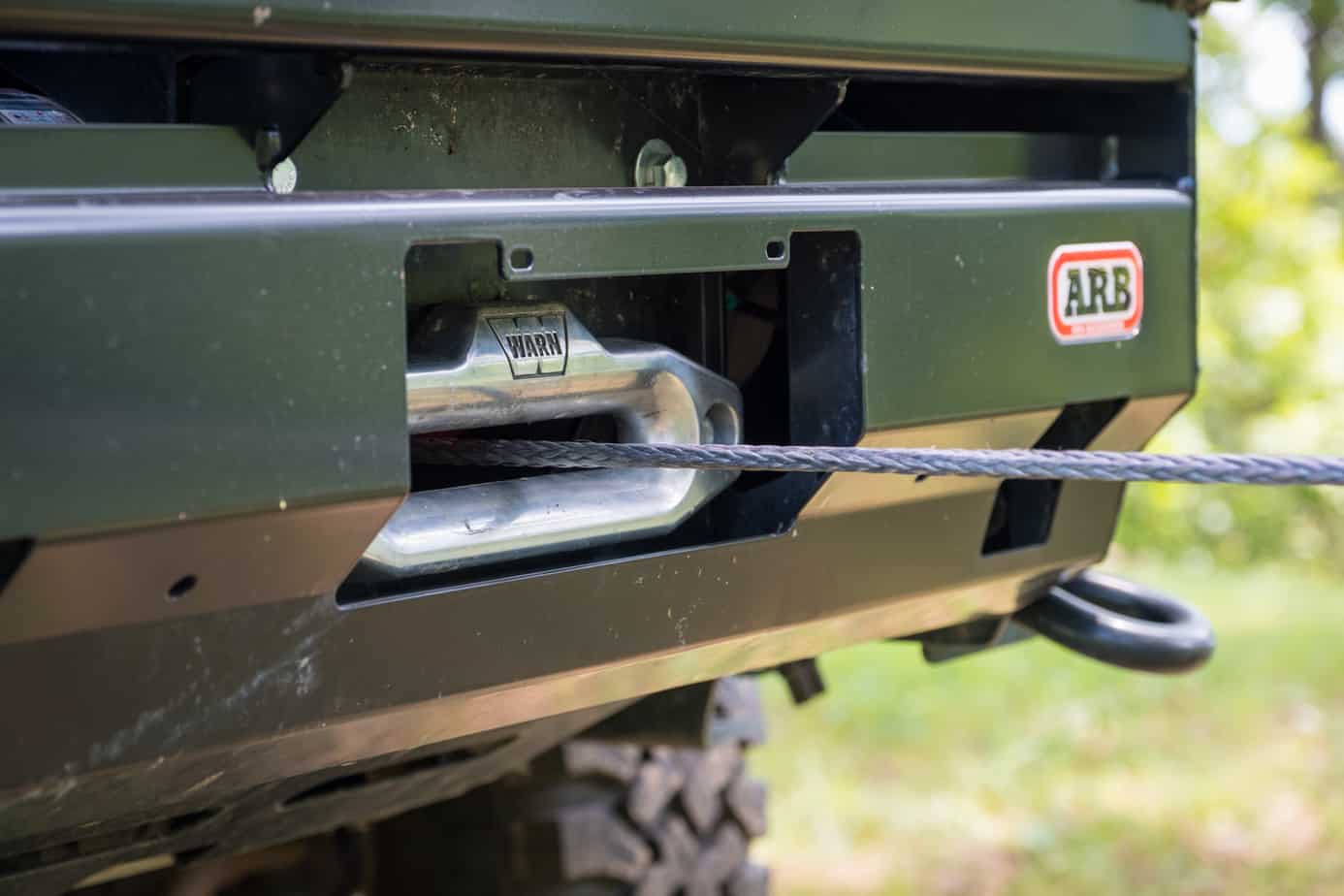
A Good Quality Winch Mount
Once you have a winch that fits your needs, you’ll need a good place to mount it. There are plenty of options out there, including bumpers, winch trays, hidden mounts, and some factory options from companies like Land Rover and RAM. It’s important to keep in mind that just because a bumper looks burly doesn’t mean it is. Many aftermarket bull bars and brush guards are not suited to serve as winch mounts, so make sure that whatever option you choose is attached to the frame of the vehicle and utilizes properly rated hardware.
 Gloves
Gloves
An often overlooked and vital piece of the winching kit, gloves will keep your hands protected when handling heavy recovery equipment and cable. They are especially critical when using steel line, as a sharp piece of cable can quickly catch your hand and do serious damage. At a minimum, your gloves should be thick enough to protect your hands and have enough grip to pull cable. If possible, I also like to see impact protection for heavy objects, and splashes of bright color to make hand signs more visible. Many people will also choose a glove without a cuff strap. This allows your hand to pull free should the glove become pinched in some way.
 Two Shackles
Two Shackles
Bow shackles and D-shackles are used in the rigging to attach the winch line to straps, bumpers, and extensions. If you don’t have at least one shackle, then you aren’t winching. We prefer bow shackles over D-shackles due to their extra space for straps and superior ability to handle side loads, but it’s possible to use both. You can also use soft shackles which offer a range of advantages over steel. Most basic kits come with steel however, so we’ll get to soft shackles below.
Like the winch, the key with shackles is to make sure they are properly rated. This means that you’ll need to make sure that they’re rated with a working load limit (WLL) higher than anything you’ll be producing with your winch and vehicle. Keep in mind that your pulling force may be increased by pulley blocks, heavy recoveries in mud, accidental shock loads, etcetera. Fortunately, quality shackles have a higher breaking strength than their WLL, so if you see that a shackle has been cracked, deformed, bent, or shows any signs of wear, replace it immediately. It has likely exceeded its max WLL and is now structurally compromised.
 A Tree Trunk Protector
A Tree Trunk Protector
A tree truck protector is a static strap used to anchor a winch line to a tree, rock, or other solid object. It is meant to prevent damage to the tree as well as your winch line, and must be used in conjunction with a shackle for a proper connection. To clarify, do not hook your winch hook directly onto a tree strap, and don’t ever wrap your cable around a tree and hook it back to the cable. Both can damage the components and lead to dangerous failures, as well as damaging the environment.
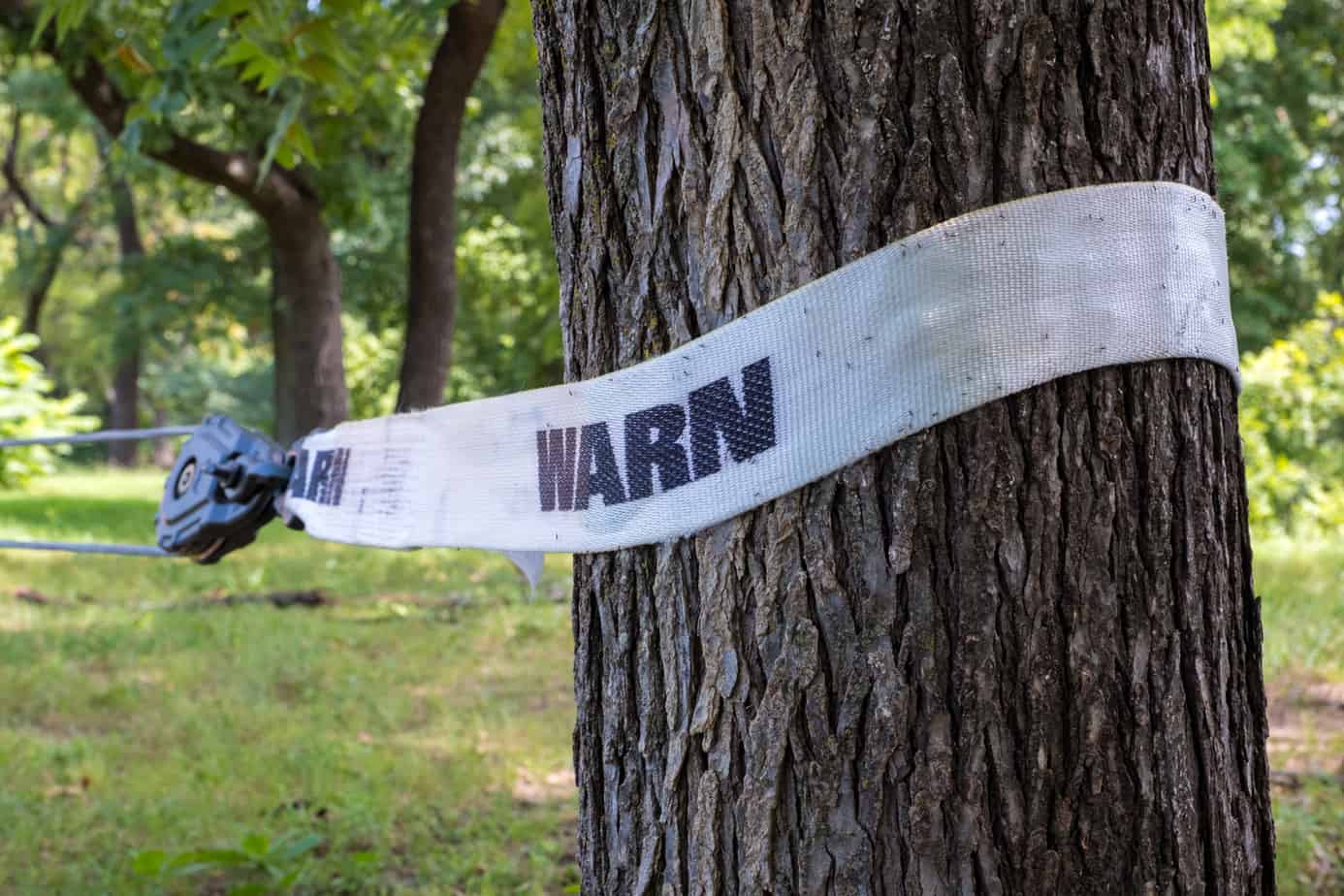
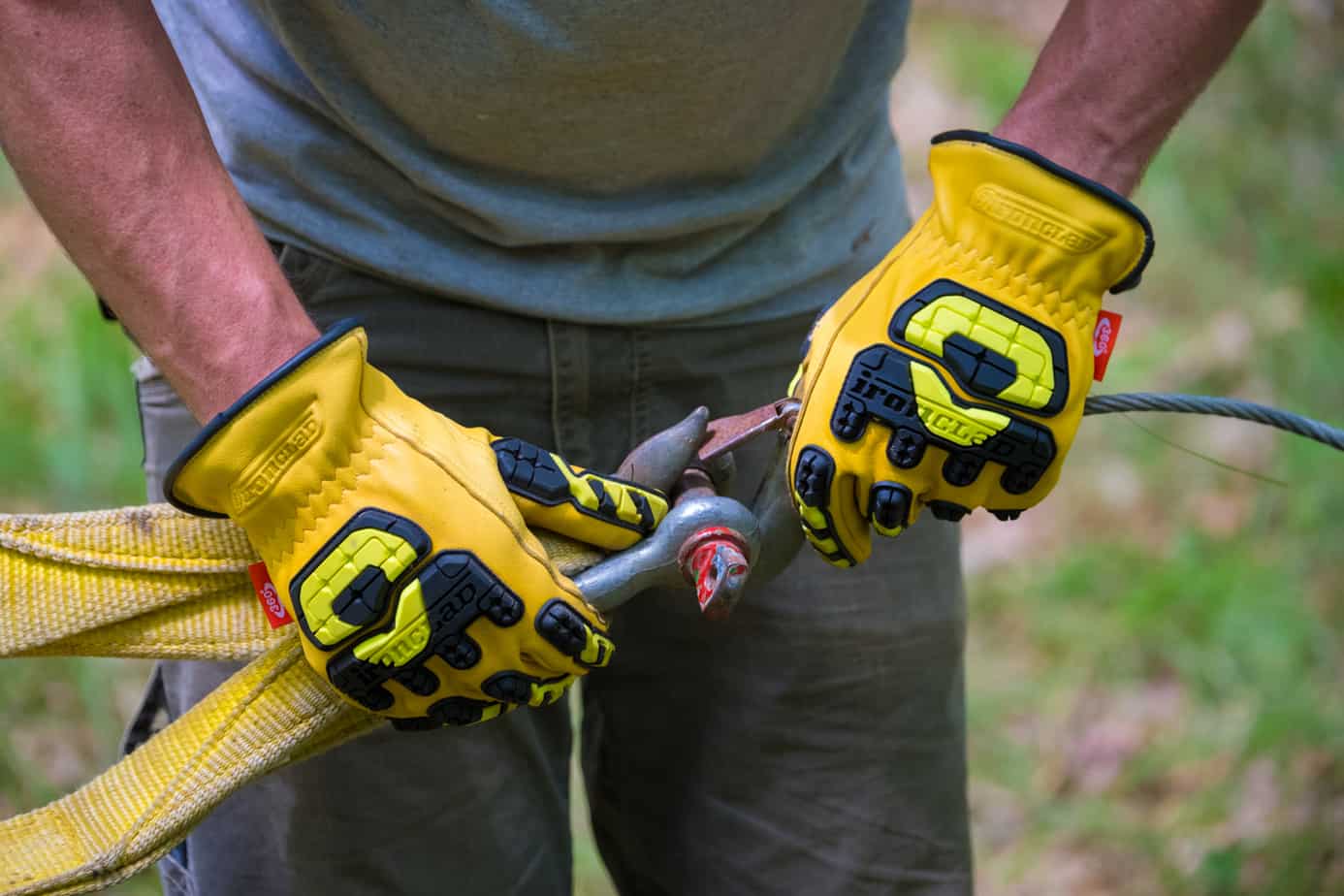
Winch Line Damper
When a winch line is taught, there is an incredible amount of force being distributed through the cable and rigging. Should the line or a component break, it will release all of the pent-up force at once, causing the cable to rip through the air and possibly fire shackles and pulleys in all directions. A damper is used to help subdue that reaction. While many things can be used as dampers, they are generally heavy and durable items that are easy to wrap around the winch line, and will absorb the hit from the cable reducing the line’s energy. Some companies like ARB sell independent dampers, while others like WARN use the bag provided with their recovery kits. There are plenty of options out there, and you can even feel free to create your own, but never winch without one on every section of cable. If you are using a pulley block from a tree back to your vehicle, you’ll need one on the section of line going to the tree, and one on the section of line returning from the tree. Alternatively, in the photo below we ran three pulley blocks for a total of four line sections, which meant we needed four total dampers. Obviously we don’t carry that many, so we used recovery ropes and straps throughout.
 A Pulley Block
A Pulley Block
Alright, so you can definitely winch without a pulley block, but I put it on the basic list because I HIGHLY recommend you purchase one. The pulley block, often called a snatch block, is a device that can allow you to change the direction of a pull, increase the force, or possibly do both depending on the scenario. It can also allow you to put more line out for better winch efficiency should your only anchor point be close by. Unfortunately there’s a lot of confusion when it comes to how and where to use these valuable pieces of equipment, so once again we recommend you reference the winching article at the bottom of this page for a more clear understanding of proper operation.

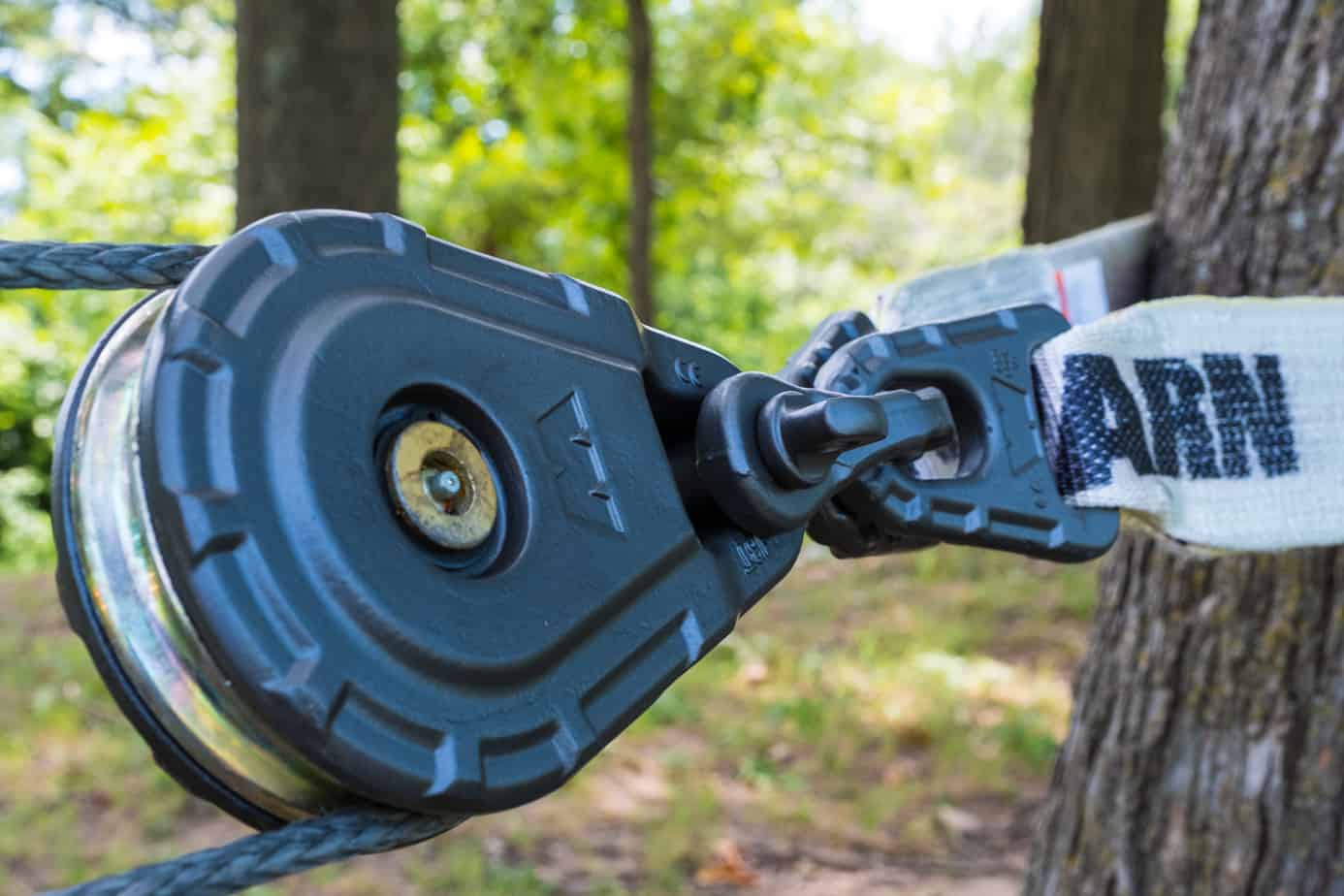
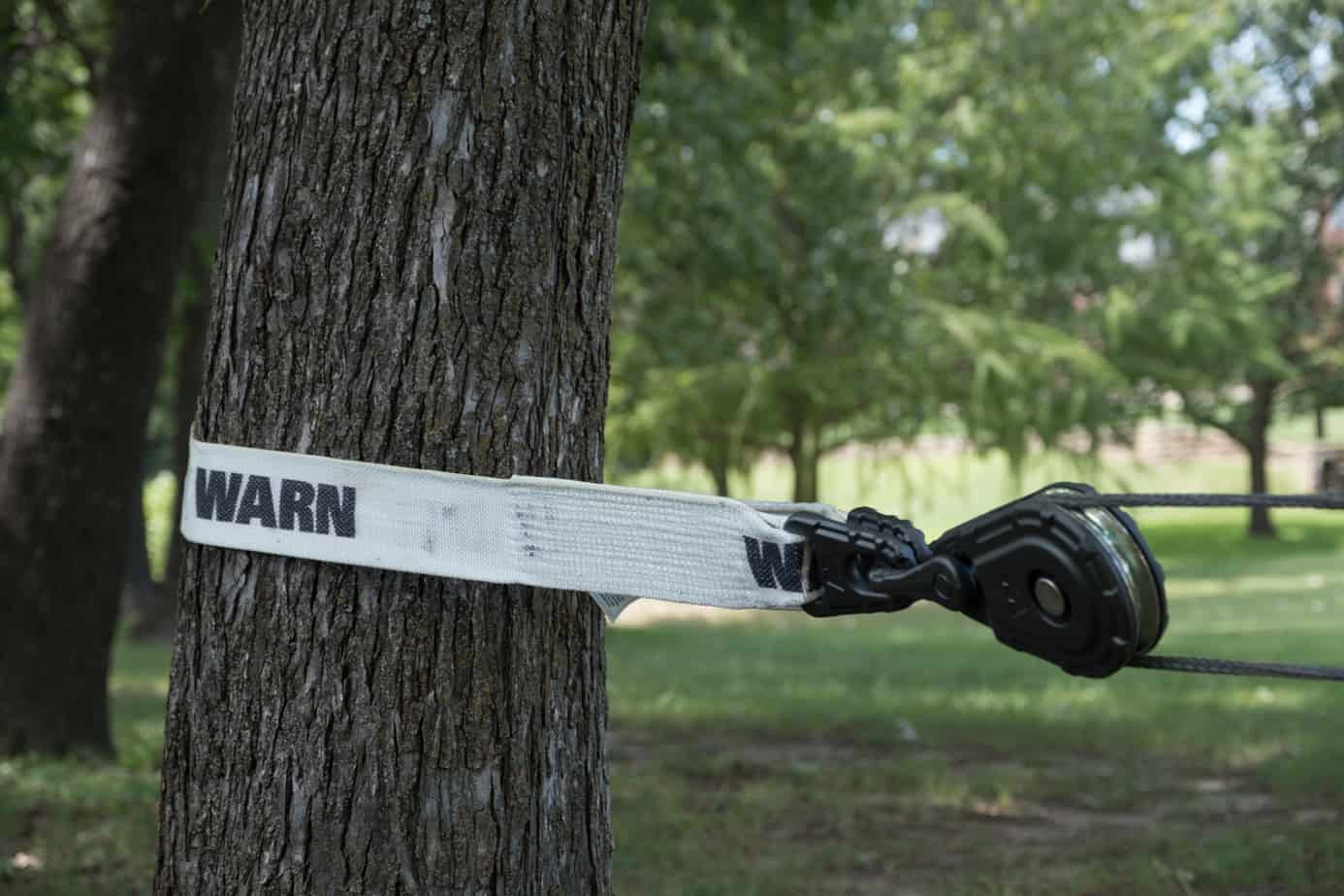
The Grab Strap
Ever wonder what that little strap hanging off your winch hook was for? It’s not free branding for the company or just there for looks; it’s actually a grab handle for your winch hook. Specifically, it enables you to keep your hands clear of the hook and fairlead as you wind in the last small stretch of line—the point where a pinch is most likely to occur. If you don’t have one, we highly recommend picking one up online. They’re cheap, and could save you a lot of pain down the line.
Shovel
I debated putting a shovel on this list. Its usefulness spans so far outside of winching that it feels a little unnecessary, but many people fail to use it in winching scenarios, so here we are. If you’re winching, use your shovel to prepare your winching path. Remove snow from in front of the vehicle, fill in the holes you dug with your tires, build a ramp, whatever you need to do to make the winch’s job easier.
The Big Kit
If the baseline kit sounds familiar, it’s because most companies include some variation of these items in their standard winching recovery bag. We’ve used a good deal of them before, and if you’re just beginning to build your own kit they’re a good place to start. I personally carry the WARN Heavy Duty kit from their Epic series, and simply add components as needed. The downside to these kits is that they lack the quantity of equipment required for more advanced pulls, so let’s take a look at what you need for those below.
More Pulley Blocks
A total of three to be precise. As mentioned previously, pulley blocks allow you to change directions and increase the applied pulling force to a vehicle. With three pulley blocks, it’s possible to do things like use a rear vehicle to pull a front vehicle forwards, pull your own vehicle backwards, or gain a 3:1 mechanical advantage.
More Shackles
The more connections and direction changes you make, the more shackles you are going to need. The exact number will depend on what you are comfortable with, what sort of terrain and situations you usually find yourself in, and how much money you can spend, but my ideal kit would have two or three bow shackles and two or three soft shackles. The soft or synthetic shackles are handy for hooking to strange surfaces like a slider, preventing damage to a vehicle when the shackle is close to the paint, and for hooking the winch extension and other cables together. As a general rule you never want to suspend a steel shackle between two lines in the air, so the soft shackle provides an easy alternative. They are also lighter, and in many cases as strong or stronger than steel shackles. So what’s the downside? Not much, really. I personally don’t like how they mate certain components together, like a pulley block with a tree strap. It just feels a little awkward and less controlled than the steel to steel to steel connection as seen below, but that’s simply my personal opinion.
 More Straps
More Straps
In order to connect all those shackles and pulley blocks to trees and other anchors, you’ll need a few more straps. If you’re running three pulley blocks, three straps would be a good bet. The length is up to you, but you need to make sure that they are static straps and not dynamic recovery ropes which have some stretch. I actually prefer the longer static straps if I can get them, because you can always make a strap shorter, but it’s hard to make them longer. Once again, make sure these straps are rated for the potential pulling power coming from your winch, which could be doubled or tripled after the snatch blocks.
 Winch Line Extension
Winch Line Extension
Winches only have so much line, so if you’re doing a long pull like winching yourself backwards or reaching a far-off tree, you’ll likely need an extension. There are a variety on the market, but I tend to lean toward a true synthetic winch line extension instead of a square strap style. The true winch line extension allows you to daisy chain to adjust for length, and run the extension through pulley blocks when needed. As always, you’ll want to make sure it is at least rated to the same capacity as your current line if not more.
Ground Anchor
One of the last items to consider is a ground anchor or pull pall. These are essentially metal plows designed to push further into the ground as you pull on them, creating a solid winch point. They’re very useful, but also very heavy so you really don’t want to carry them around if you don’t have to. They are best suited for environments where suitable trees or other connection points cannot be found.
A smaller and lighter alternative to the ground anchor is the Dead Man, which can be seen here. While it is compact enough to fit beneath your seat, it also requires a lot more time and energy digging to set up for recovery, and is not ideal in all situations.
Finally, the cheapest option is using your spare tire, which requires you to dig a hole deep enough for the tire in the ground, and a channel for the winch line to pass through toward the vehicle. Obviously, this method is the most work, but will get the job done in a pinch.

Other Considerations
As with any industry these days, there’s a seemingly endless range of things to buy. Things like winch line repair kits, chains, upgraded hooks, inclinometers, and slings can all be useful but not mandatory. As stated above each person should evaluate their needs before making a purchase, and try to avoid spending money on gear they don’t need. After all, that’s money you could be spending on getting out and enjoying the world around us, which is what this is all about.
Now it’s time to move onto the really fun stuff, operating your winch! For more detailed information on how to winch, important safety information, and some seriously helpful scenarios, check out Winching Without The Worry, by Overland Experts founder Bruce Elfstrom.







